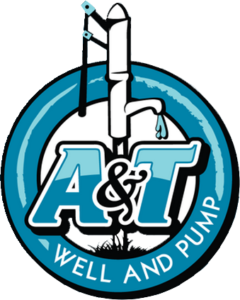Our team specializes in comprehensive well maintenance services. With our expertise and attention to detail,…
If you are moving to a new property and either don't have access to, or choose against, municipal water, your other option is to dig a well. The first step in this process is finding the proper place to put it to ensure your home has reliable and ready access to fresh, clean water. To help you, we're sharing four key tips on how to know where to dig a well.
Stay Away from Septic Drainage
The number one thing to factor in well placement is making sure it's far away from any septic drainage fields or sewage lagoons. E. coli and other types of bacteria found in septic fields can seep into the ground water and into your well water, which could make you and your family very sick. Similarly, you'll want to also avoid digging a well near animal and livestock pens.
While layers of soil and rock do filter the bacteria, the FHA recommends a minimum of 100 feet of space between a septic tank's drain field and a water well. Any closer, and you risk contamination.
Look for Surface Rocks
In central North Carolina, most wells are dug to 300 feet deep, which means 300 feet of soil, sand, silt, and rock. If you are looking for where to dig a well, first choose an area, dig a few feet deep and see what you hit. If you're mostly digging up dirt with some small rocks and stones (smaller than you're hand), than there probably won't be much difficulty in digging the well. On the other hand, if you run into large rocks and stones, or even partially buried boulders, this is a sign of subterraneous rock beyond bedrock or gravel that filters the water that may slow the drilling process and make it more expensive.
Consider the Topography of Your Land
While your well should be capped and protected, you still need to factor in water runoff. Surface water from heavy rains or localized flooding can carry bacteria and other contaminants that can be dangerous to you and your family if they seep into the well. If possible, your well site should be elevated so that surface runoff is moving away from the well instead of over or towards it.
To help protect against runoff from flooding, you'll want to keep your well around 40 to 50 feet from any streams, rivers, and ponds that may contain contaminants.
Choose a Convenient Area to Your Home
If you are building a home or placing a manufactured or modular home on your property, you'll want your well to be fairly close to your home without being at risk for contamination or structural issues.
- Never place a home or construct a home over an existing well;
- You'll want the well to be a minimum distance of two feet from the edge of the eaves to the center of the well;
- If you have clearwater sumps, downspout discharges, or gravity building drains, you'll want those to be a minimum of eight feet from your well, while pressurized drains and sewers as well as sewage sumps should be 25 feet away.
Schedule a Quote for Well Digging in the Raleigh Area
If you're ready to have a water well dug around your property, call our experienced team of well specialists. We will work with you to choose the best location for well drilling and make sure you have a reliable, safe source of water for years to come. To learn more, call us at (919) 980-0981 or fill out the form below.
Contact Form
We would love to hear from you! Please fill out this form and we will get back to you shortly.
"*" indicates required fields

